I was having my morning coffee and checking the latest security news when I saw a number that made me nearly choke on my drink: cybercrime is set to cost businesses up to $10.5 trillion by 2025 and could reach as high as $15.63 trillion by 2029. We’re not talking about some abstract figure here – that’s like the entire GDP of several countries just… gone. It reminded me of the time our agency had to completely rebuild a client’s digital infrastructure after they fell victim to what seemed like a “simple” phishing attack. Nothing about cybersecurity is simple anymore.
Look, the whole game has changed. Remember when we worried about some kid in his parents’ basement trying to deface websites? Those days are long gone. We’re dealing with actual countries, organized crime rings, and AI-powered attacks. This isn’t your grandfather’s cybersecurity anymore.
Here’s what really gets me about these 25 incidents – it’s not just how big they were or how much damage they caused. It’s what they teach us about how these attacks actually work. From supply chain attacks that hit thousands of companies at once to scams that trick people into handing over the keys to the kingdom, these cases show patterns that every business owner needs to understand.
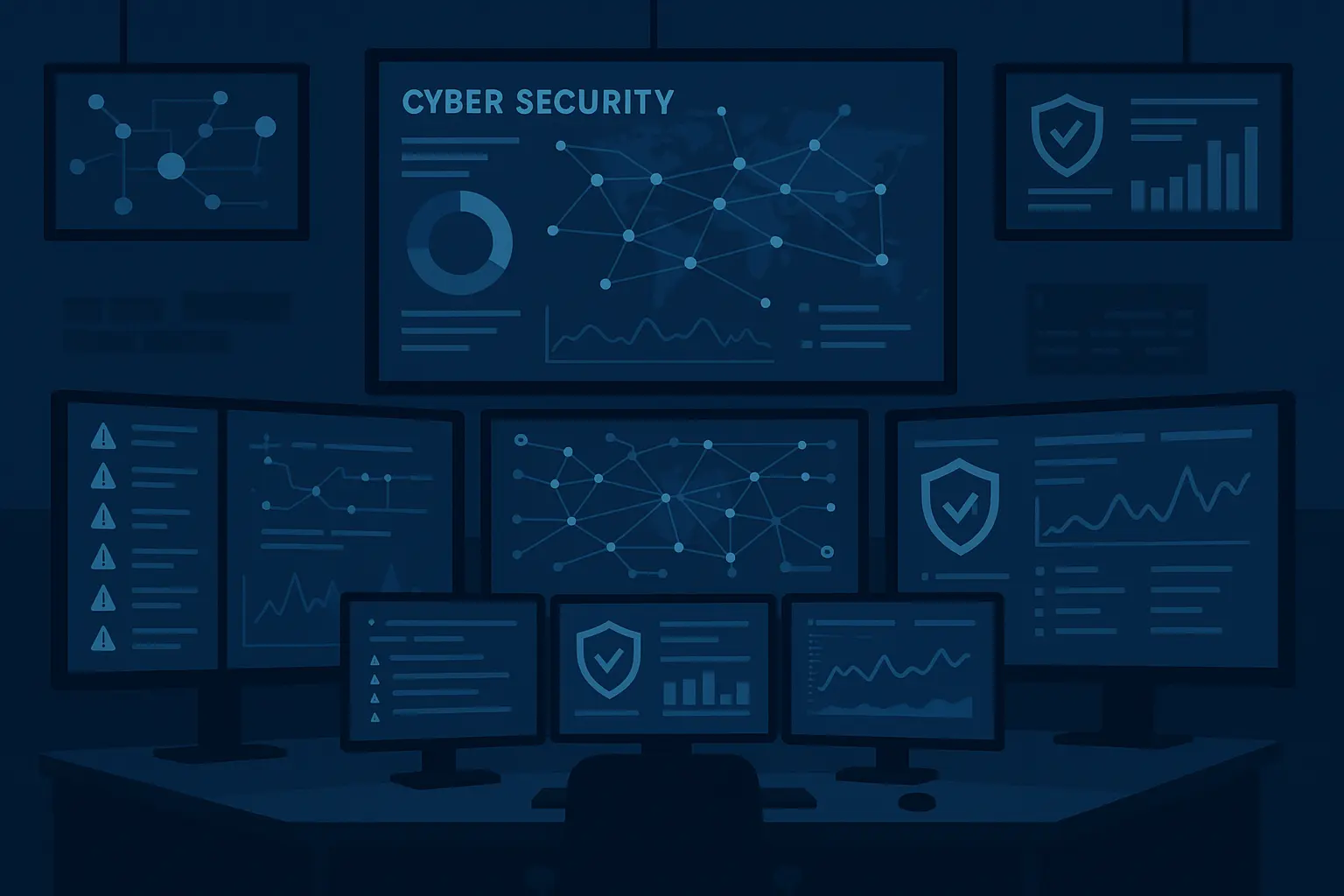
Table of Contents
-
How to Actually Learn from These Disasters (Instead of Just Reading Scary Headlines)
-
Ransomware: How Digital Kidnapping Became Big Business
-
1. Colonial Pipeline Ransomware (2021)
-
2. Kaseya Supply Chain Attack (2021)
-
3. JBS Meat Processing (2021)
-
4. Garmin Fitness Tracker Company (2020)
-
5. Baltimore City Government (2019)
-
-
When Your Data Gets Dumped All Over the Internet
-
6. Facebook/Cambridge Analytica Scandal (2018)
-
7. Equifax Data Breach (2017)
-
8. Capital One Data Breach (2019)
-
9. Marriott International Breach (2018)
-
10. Yahoo Data Breaches (2013-2014)
-
-
Nation-State Attacks: When Countries Go to Cyber War
-
11. SolarWinds Supply Chain Attack (2020)
-
12. Chinese APT Attacks on COVID-19 Research (2020-2021)
-
13. Iranian APT Attacks on Critical Infrastructure (2019-2021)
-
14. North Korean Lazarus Group Financial Attacks (2016-2021)
-
-
Cloud Security Failures: When “Someone Else’s Computer” Goes Wrong
-
15. Microsoft Exchange Server Vulnerabilities (2021)
-
16. AWS S3 Bucket Misconfigurations (Ongoing)
-
17. Zoom Security Issues During COVID-19 (2020)
-
18. Cloudflare Cloudbleed Bug (2017)
-
-
Social Engineering: When Humans Are the Weakest Link
-
19. Twitter Bitcoin Scam (2020)
-
20. Anthem Healthcare Insider Threat (2015)
-
21. Tesla Insider Sabotage Attempt (2018)
-
22. Capital One Insider Trading Scheme (2019)
-
-
IoT Disasters: When Everything Gets Connected (Badly)
-
23. Mirai Botnet and IoT Device Compromise (2016)
-
24. Jeep Cherokee Remote Hack (2015)
-
25. Ring Doorbell Privacy Breaches (2019-2020)
-
-
The Damage Report: Rating Each Case Study’s Impact and What We Can Learn
-
What This All Means for Your Marketing Operations
TL;DR
-
Ransomware groups now run like businesses – complete with customer service, affiliate programs, and professional operations
-
One compromised vendor can wreck thousands of companies – supply chain attacks are the new nightmare scenario
-
95% of breaches happen because someone screwed up – humans remain the biggest security risk
-
Cloud misconfigurations are everywhere – default settings and confusion about who’s responsible create massive data leaks
-
Countries are stealing your stuff – nation-states went after COVID research, showing how cyber espionage affects everyone
-
Your smart devices are security disasters – default passwords and no updates create massive botnets
-
Inside jobs are the hardest to catch – when employees go rogue, their legitimate access makes them nearly invisible
-
Recovery costs way more than ransom payments – the real damage includes downtime, reputation hits, and regulatory fines
-
Social media platforms are prime targets – their influence makes them attractive for scams and propaganda
-
Unpatched systems become highways for attackers – one security hole can let in multiple bad actors
How to Actually Learn from These Disasters (Instead of Just Reading Scary Headlines)
Look, if you want to actually learn something from these disasters instead of just reading scary headlines, here’s what you need to pay attention to. Most people just focus on the damage numbers, but that’s missing the real lessons.
When I analyze these incidents, I don’t just look at the money – though those numbers are pretty eye-opening. The real value comes from understanding what went wrong and how you can avoid making the same mistakes.
What to Actually Measure
The money stuff is obvious, but it’s not the whole picture. Sure, Colonial Pipeline paid $4.4 million in ransom, but the real economic hit was in the billions when you count fuel shortages, supply chain chaos, and emergency response costs. You need to look at both the direct costs (ransom payments, recovery expenses) and the hidden costs (lost productivity, reputation damage, regulatory fines).
For organizations looking to understand the financial implications of security incidents, our ROI calculator can help quantify the business impact of security investments versus potential breach costs.
Operational disruption often hurts more than the financial losses in the long run. When Baltimore’s city government got hit by ransomware, they couldn’t process real estate transactions for months. Citizens couldn’t pay bills online. The ripple effects touched every aspect of how the city operated.
Here’s the thing about data breaches – it’s not about how many records got stolen. It’s about what kind of data and whether victims can do anything about it. Equifax’s breach of 147 million records was devastating because it included Social Security numbers and financial data that people can’t just change like a password. Compare that to a breach of email addresses, which is bad but has different implications.
|
What to Look At |
How to Measure It |
Real Example |
How Bad Was It? |
|---|---|---|---|
|
Financial Impact |
Direct costs, indirect costs, market cap loss |
Colonial Pipeline: $4.4M ransom + $2B+ economic impact |
Critical |
|
Operational Disruption |
Downtime duration, services affected, recovery time |
Baltimore: 3+ months of limited city services |
High |
|
Data Sensitivity |
Record volume, data types, replaceability |
Equifax: 147M records with SSNs and credit data |
Critical |
|
Regulatory Response |
Fines imposed, new regulations, compliance requirements |
Facebook: $5B FTC fine + enhanced privacy laws |
High |
|
Reputation Damage |
Customer churn, trust metrics, brand value loss |
Yahoo: $350M reduction in Verizon acquisition price |
High |
What You Can Actually Use
The most valuable incidents offer lessons you can actually apply to your own situation. SolarWinds taught us that supply chain security isn’t optional – it’s existential. The attack methods they used could work against any organization that gets software updates from vendors (which is basically everyone).
Prevention strategies should be things you can actually do, not theoretical nonsense. The Twitter Bitcoin scam showed specific social engineering techniques that work against employees with special access. Companies can implement real countermeasures: better verification procedures, splitting up responsibilities, and regular training on how to spot these tricks.
Response effectiveness varies dramatically between organizations. Some companies catch breaches within hours; others take months. The difference usually comes down to monitoring systems, having a plan for when things go wrong, and creating a culture where people feel safe reporting suspicious stuff.
Consider how different organizations handled similar ransomware attacks: Colonial Pipeline shut down operations right away and paid the ransom within days, while Baltimore refused to pay and dealt with months of service disruptions. Both approaches had merit, but the outcomes were completely different based on what each organization prioritized.
How Complicated Were the Attacks?
Attack sophistication helps predict what’s coming next. The SolarWinds attackers showed patience, careful operational security, and technical skills that screamed nation-state capabilities. Understanding these techniques helps security teams prepare for similar advanced threats.
When defenses fail, that’s where the real learning happens. Why didn’t existing security controls catch the Microsoft Exchange vulnerabilities being exploited? What gaps in monitoring allowed attackers to hang around for months without being detected?
Technology evolution means yesterday’s cutting-edge attacks become tomorrow’s common threats. The Mirai botnet’s IoT exploitation techniques have been copied and automated by countless other criminals.
What This Means for Your Business
How mature your organization is affects both how vulnerable you are and how well you can recover. A Fortune 500 company with dedicated security teams will respond differently than a small business with limited IT resources. Understanding these differences helps you apply lessons appropriately to your situation.
Your market position influences why attackers might target you and how much damage they can cause. High-profile targets face different threats than smaller organizations. However, supply chain attacks can make any organization a pathway to more valuable targets.
Recovery timelines reveal how resilient organizations really are. Some companies bounce back quickly from major incidents; others never fully recover. The difference often lies in preparation, how leadership responds, and how well they communicate with stakeholders.
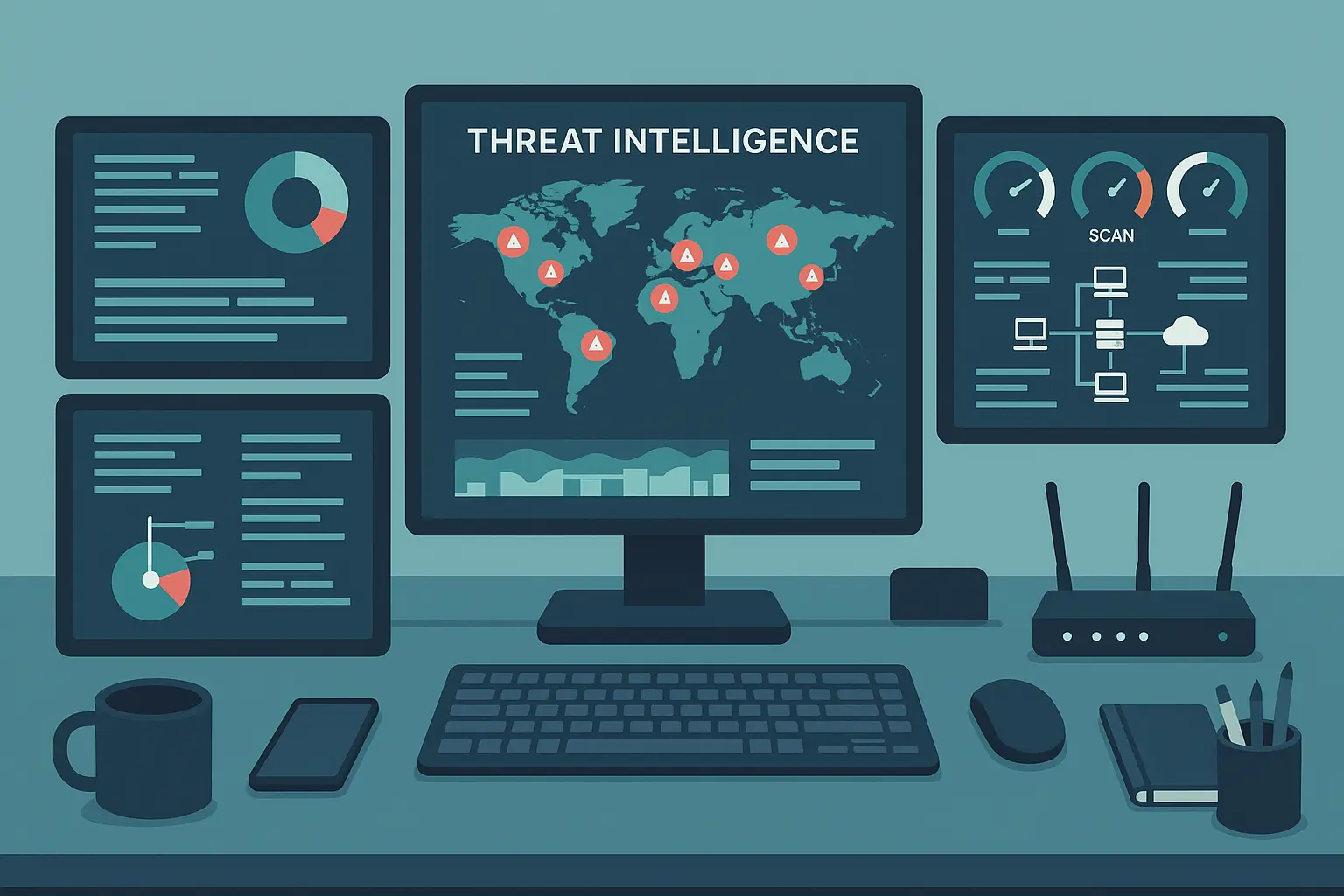
Ransomware: How Digital Kidnapping Became Big Business
Ransomware has evolved from simple file encryption to sophisticated business operations involving data theft, public shaming, and supply chain targeting. These aren’t lone wolves anymore – we’re facing organized criminal enterprises with business models, customer service departments, and profit-sharing agreements.
The ransomware world has fundamentally changed. We’re dealing with organized crime that operates like legitimate businesses, complete with HR departments and customer support.
1. Colonial Pipeline Ransomware (2021)
You want to know how they got in? One stolen password. No two-factor authentication, no backup security – just one lousy password and boom, they owned the network. This attack showed how a single compromised password could shut down critical infrastructure and cause widespread fuel shortages across the Eastern United States.
These DarkSide guys weren’t your typical ransomware crew. They basically franchised their operation – think McDonald’s, but for cybercrime. They operated a Ransomware-as-a-Service model, licensing their malware to affiliates who would conduct attacks and share profits.
The attack vector was embarrassingly simple: a compromised VPN password without multi-factor authentication. One password gave attackers access to Colonial’s corporate network. While they didn’t directly mess with the operational technology controlling the pipeline, Colonial made the smart decision to shut down the entire system as a precaution.
Here’s what made this attack particularly devastating: the attackers understood their target’s psychology. They knew Colonial would prioritize public safety and getting operations back online over haggling about money. The $4.4 million payment was calculated – expensive enough to be profitable, but not so expensive that it would trigger prolonged negotiations.
The six-day shutdown was chaos. For six days, the East Coast basically ran out of gas. I watched people panic-buying fuel in Virginia, creating shortages where there shouldn’t have been any. Gas stations ran dry across the Southeast. Airlines had to reroute flights. Multiple states declared emergencies.
Recovery involved federal agencies, cybersecurity firms, and law enforcement working together. The FBI eventually recovered about 63.7 bitcoins of the ransom payment by tracking the cryptocurrency transactions – a reminder that Bitcoin isn’t as anonymous as many people think.
2. Kaseya Supply Chain Attack (2021)
This is what really ticks me off about the Kaseya attack – these criminals were smart. Instead of going after 1,500 companies one by one (which would take forever), they hit the one company that could get them into all 1,500 at once. Evil? Yes. Brilliant? Unfortunately, also yes.
REvil (also known as Sodinokibi) pulled off one of the most efficient ransomware campaigns in history by targeting the supply chain rather than individual victims. They exploited zero-day vulnerabilities in Kaseya’s VSA software – a tool used by Managed Service Providers to remotely monitor and manage their clients’ systems.
The genius of this approach was mathematical: instead of attacking 1,500 companies individually, they attacked one company that had access to 1,500 companies. The attack spread through Kaseya’s software update mechanism, turning a trusted security tool into a distribution channel for malware.
Kaseya’s response was swift but costly. They immediately shut down their SaaS servers and told on-premises customers to shut down VSA servers. This meant MSPs lost their primary tool for managing client systems right when they needed it most – during a massive ransomware incident.
The attackers initially demanded $70 million for a universal decryptor key. However, law enforcement eventually got hold of the key and Kaseya distributed it for free to affected customers. This showed both how vulnerable supply chain attacks can be and how coordinated response efforts can work.
3. JBS Meat Processing (2021)
When REvil targeted JBS, they weren’t just attacking a company – they were attacking the global food supply chain. JBS processes about 20% of America’s beef and pork, making them a critical infrastructure target that couldn’t afford to stay down.
The attack forced JBS to shut down operations in the US, Australia, and Canada. Meat prices spiked as supply concerns rippled through markets. The company ultimately paid about $11 million in ransom to prevent data leakage and get operations back online quickly.
This case shows how ransomware groups have become strategic in picking their targets. They understand which organizations can’t afford extended downtime and price their ransoms accordingly.
4. Garmin Fitness Tracker Company (2020)
WastedLocker ransomware encrypted Garmin’s internal network and production systems, causing a widespread outage that affected millions of users worldwide. Garmin Connect services went dark, leaving fitness enthusiasts unable to sync their workouts or access their historical data.
The attack also hit Garmin’s aviation databases and maritime services – critical tools for pilots and boat operators. This showed how modern companies often serve multiple markets with interconnected systems, making the impact of successful attacks much bigger.
Garmin reportedly paid a multi-million dollar ransom to restore services, though they never officially confirmed the payment. The incident lasted several days, showing just how complex it is to recover from enterprise-wide encryption.
5. Baltimore City Government (2019)
RobbinHood ransomware crippled Baltimore’s city government systems, affecting email, voicemail, online bill payments, and real estate transactions. The attackers demanded 76,000 bitcoins (about $76 million at the time) – an astronomical sum that showed either really poor target research or intentional overpricing.
Baltimore refused to pay and instead went through a lengthy recovery process that cost over $18 million and took months to complete. Citizens couldn’t pay water bills online, real estate transactions were delayed, and city employees had to go back to doing everything manually.
The incident raised important questions about public sector cybersecurity and the ethics of ransom payments. Should taxpayer money ever be used to pay cybercriminals? How do you balance keeping public services running against the moral problem of funding criminal enterprises?
The contrast between Colonial Pipeline and Baltimore’s approaches shows just how complex these response decisions are. Colonial Pipeline, as a private company with clear business needs, paid quickly to restore critical infrastructure. Baltimore, as a public entity with ethical obligations and budget constraints, chose the longer recovery path. Both decisions made sense in their contexts, but the outcomes highlight how organizational type and mission influence how you respond to incidents.
When Your Data Gets Dumped All Over the Internet
Data has become the new oil, and data breaches are the new environmental disasters. The scale, scope, and societal impact of modern data breaches extend far beyond the immediate victims to reshape entire regulatory landscapes and business practices.
6. Facebook/Cambridge Analytica Scandal (2018)
This wasn’t a data breach – it was a revelation about how personal data could be weaponized for political manipulation. Cambridge Analytica harvested data from about 87 million Facebook users through a seemingly innocent personality quiz app called “This Is Your Digital Life.”
The data collection trick exploited Facebook’s API permissions at the time. Users who took the quiz unknowingly gave access to their friends’ data as well, creating a viral data harvesting effect. This included demographics, location info, interests, and social connections – enough to create detailed psychological profiles.
Cambridge Analytica used this data to create targeted political ads and disinformation campaigns during the 2016 US presidential election and Brexit referendum. They used psychological profiling to mess with voter behavior, essentially turning personal data into a tool for manipulating democracy.
The regulatory response was unprecedented. Facebook paid a record $5 billion FTC fine, faced multiple congressional hearings, and had to implement major privacy policy changes. The scandal sparked global conversations about data privacy rights and sped up regulations like GDPR and the California Consumer Privacy Act.
After this happened, I stopped trusting social media companies with anything important. And honestly? You should too. This incident fundamentally changed how we think about social media platforms, data ownership, and how technology intersects with democracy.
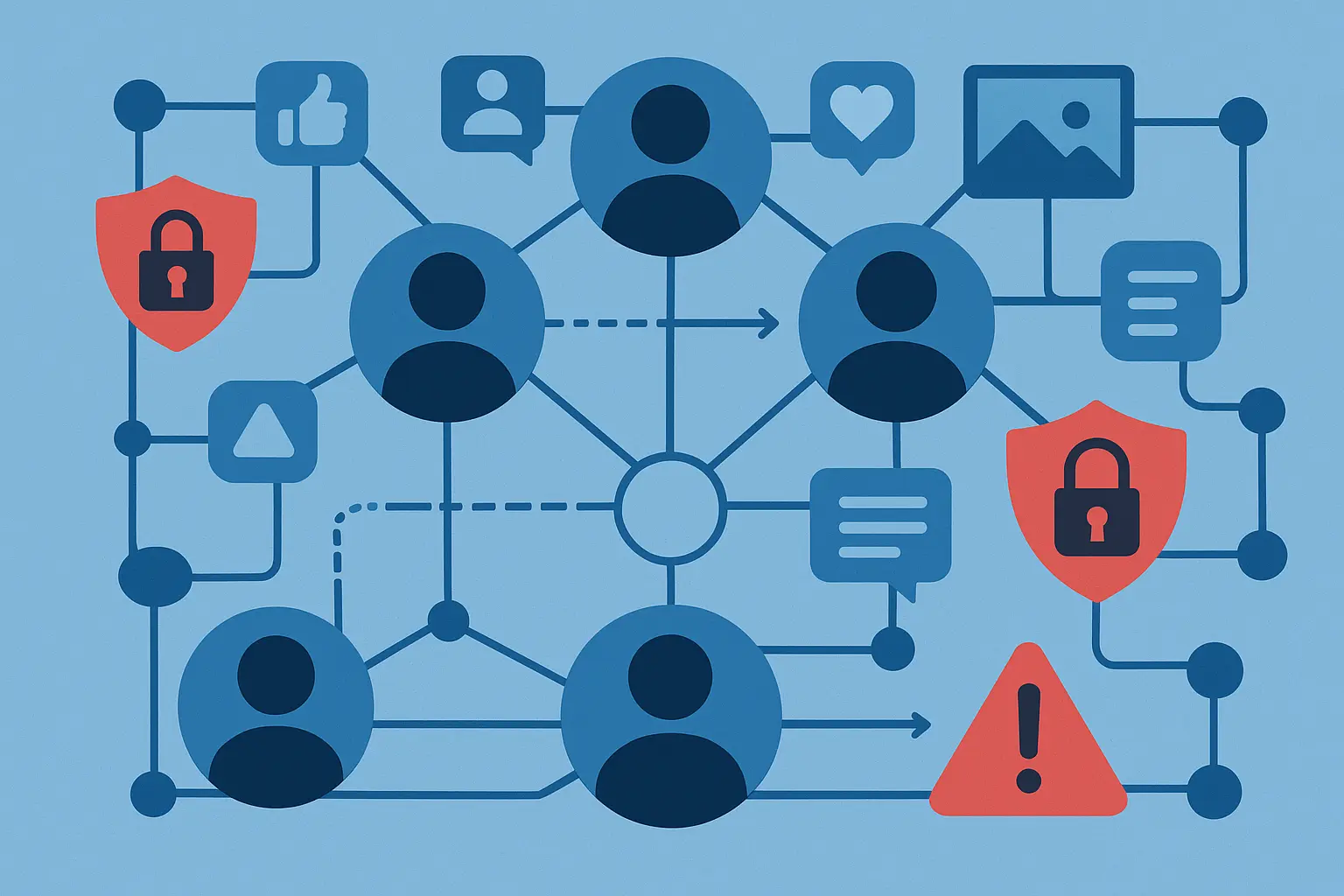
7. Equifax Data Breach (2017)
Equifax held some of the most sensitive personal information in America: Social Security numbers, birth dates, addresses, and credit histories for nearly half the US population. When they got breached, it wasn’t a corporate crisis – it was a national security incident.
The attack exploited a vulnerability in Apache Struts web application framework that had a patch available for months before the attack. This represents one of the most egregious examples of patch management failure in cybersecurity history.
Here’s the timeline that’ll make you mad: The vulnerability existed from March to July 2017. Attackers got in during May and spent 76 days stealing data without being detected. The breach included Social Security numbers, birth dates, addresses, driver’s license numbers, and about 209,000 credit card numbers.
But wait, it gets worse. Equifax’s security tools failed to detect the breach initially because an expired security certificate prevented their breach detection system from working properly for 19 months. The company also got hammered for delayed public disclosure and insider trading allegations when executives sold stock before announcing the breach.
The long-term consequences reshaped the credit reporting industry. Equifax agreed to a settlement of up to $700 million, faced countless lawsuits, and went through major leadership changes. The incident led to enhanced credit monitoring services becoming standard and stricter data protection requirements for credit reporting agencies.
8. Capital One Data Breach (2019)
Paige Thompson, a former AWS employee, exploited a misconfigured web application firewall to access Capital One’s cloud storage. The breach compromised data from about 100 million customers and credit card applicants, including bank account numbers, Social Security numbers, and credit scores.
This case highlighted the unique risks of cloud computing, particularly around insider threats and configuration management. Thompson used her knowledge of AWS systems to find and exploit the misconfiguration, showing how insider knowledge can supercharge attack capabilities.
Capital One got fined $80 million by regulators and agreed to pay $190 million in a class-action settlement. The incident sped up discussions about cloud security responsibilities and the need for continuous configuration monitoring.
9. Marriott International Breach (2018)
Marriott discovered that attackers had been accessing their Starwood guest reservation database since 2014 – four years before they even knew about it. The breach affected about 500 million guests and included passport numbers, payment card info, and personal details.
The incident showed the security challenges of corporate acquisitions. When Marriott bought Starwood in 2016, they inherited assets and customers, but also an ongoing security breach they didn’t know existed.
Marriott faced multiple regulatory fines, including £99 million from the UK’s ICO, and numerous class-action lawsuits. The case set precedents for how regulators would handle breaches that span multiple years and corporate ownership changes.
10. Yahoo Data Breaches (2013-2014)
Yahoo got hit with two separate massive breaches that ultimately affected all 3 billion user accounts. The breaches included names, email addresses, phone numbers, encrypted passwords, and security questions – basically everything needed for identity theft and account takeovers.
Yahoo’s delayed disclosure and terrible response significantly impacted its acquisition by Verizon. The sale price got cut by $350 million, and the incident became a cautionary tale about how cybersecurity incidents can torpedo major business deals.
The case also highlighted the challenges of securing old systems and the importance of timely breach disclosure to stakeholders and regulators.
Nation-State Attacks: When Countries Go to Cyber War
Nation-state attacks operate on a completely different level. These aren’t criminals looking for quick profits – they’re intelligence agencies and military units with unlimited budgets, years-long operational timelines, and strategic objectives that go way beyond financial gain.
11. SolarWinds Supply Chain Attack (2020)
Russian APT group Cozy Bear executed what intelligence officials consider one of the most significant cyber espionage campaigns in US history. They compromised SolarWinds’ Orion IT management software, affecting about 18,000 customers, including multiple US government agencies and Fortune 500 companies.
The attack methodology was brilliant in its simplicity and patience. Attackers inserted malicious code (dubbed SUNBURST) into legitimate SolarWinds software updates. This trojanized software was digitally signed and distributed through normal update channels, making it nearly impossible to detect.
Organizations struggling to understand the business impact of such sophisticated attacks can benefit from our advanced analytics for strategic growth approach to quantify and prepare for complex threat scenarios.
The malware sat dormant for weeks before activating and establishing command-and-control communications. The attackers showed exceptional operational security, using legitimate cloud services for command and control, copying normal network traffic patterns, and using a “low and slow” approach to avoid detection.
They spent months doing reconnaissance before moving to high-value targets. The attack hit multiple US federal agencies, including Treasury, Commerce, Energy, and Homeland Security. Private sector victims included Microsoft, FireEye, and tons of other tech companies.
The full scope remains classified, but intelligence officials consider it one of the most significant cyber espionage campaigns in US history. The incident fundamentally changed how organizations think about supply chain security and vendor risk management.
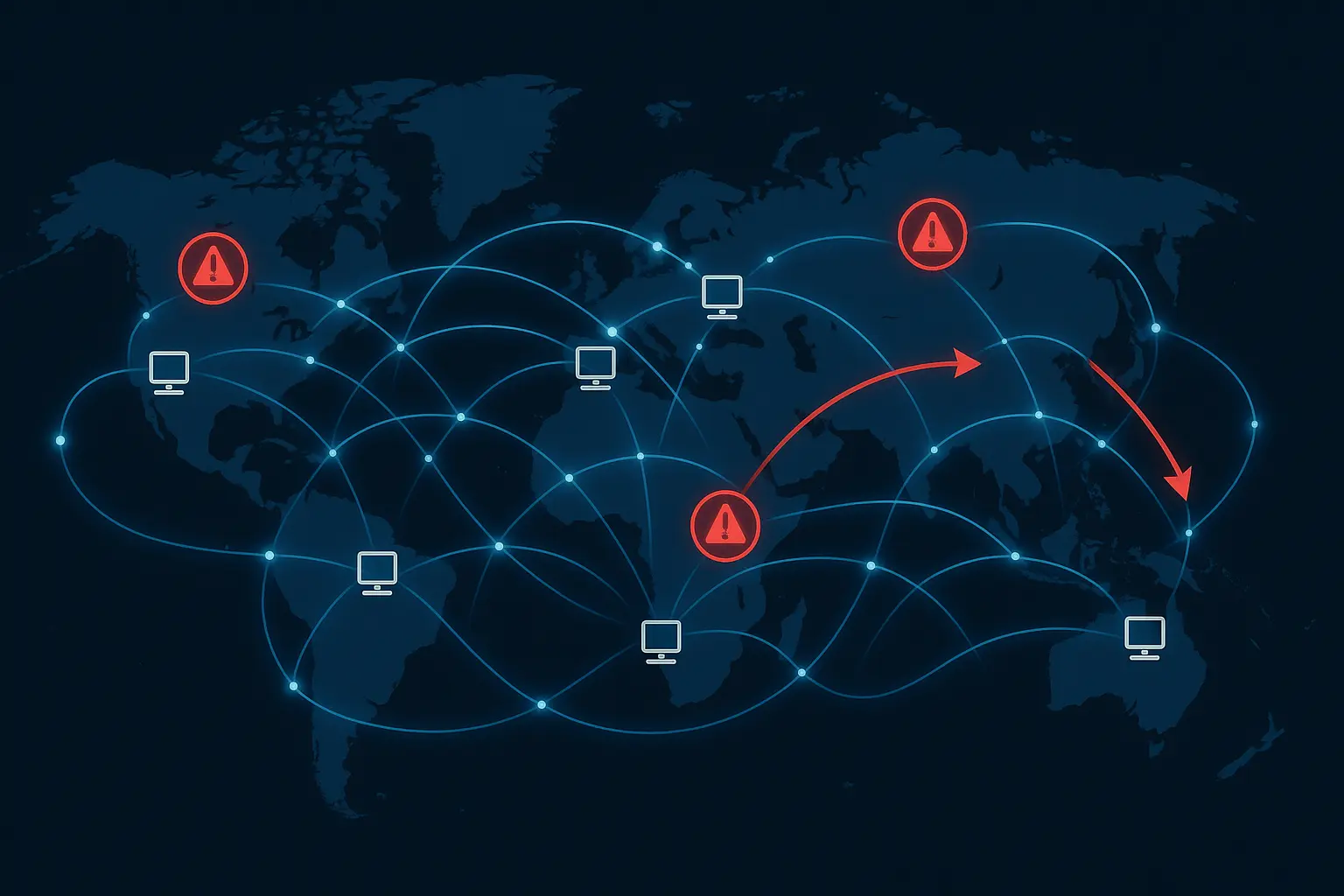
12. Chinese APT Attacks on COVID-19 Research (2020-2021)
Multiple Chinese APT groups, including APT41 and APT40, ran extensive cyber espionage campaigns targeting COVID-19 vaccine research and healthcare organizations worldwide. These attacks aimed to steal intellectual property, research data, and gain strategic advantages during the pandemic.
Target selection was strategic and comprehensive. Attackers focused on pharmaceutical companies, research institutions, healthcare organizations, and government agencies involved in COVID-19 response. High-profile targets included Moderna, Pfizer-BioNTech, AstraZeneca, and various academic research institutions.
The campaigns used spear-phishing emails, watering hole attacks, and exploitation of VPN vulnerabilities. Attackers used custom malware, living-off-the-land techniques, and legitimate admin tools to maintain persistence and avoid detection.
These attacks showed the intersection of cybersecurity, public health, and national security. They demonstrated how cyber espionage can target critical infrastructure during global crises and raised questions about international norms in cyberspace during humanitarian emergencies.
13. Iranian APT Attacks on Critical Infrastructure (2019-2021)
Iranian APT groups targeted US and Israeli critical infrastructure, including water treatment facilities, power grids, and transportation systems. These attacks combined cyber operations with potential physical consequences, like attempts to mess with water treatment chemical levels.
The campaigns showed Iran’s growing cyber capabilities and willingness to target civilian infrastructure. Unlike purely espionage-focused attacks, these operations tried to cause physical damage and disruption to essential services.
The attacks highlighted how vulnerable industrial control systems are and the potential for cyber operations to cause real-world harm to civilian populations.
14. North Korean Lazarus Group Financial Attacks (2016-2021)
The Lazarus Group ran numerous financially motivated attacks, including the $81 million Bangladesh Bank heist and the WannaCry ransomware campaign. These attacks showed North Korea’s use of cybercrime to generate revenue and get around international sanctions.
The Bangladesh Bank heist was particularly sophisticated, involving months of reconnaissance, custom malware, and manipulation of SWIFT banking systems. The attackers tried to steal $1 billion but were limited by banking security measures and a lucky typo that raised suspicions.
WannaCry caused global disruption, affecting hospitals, transportation systems, and businesses worldwide. The attack highlighted the dangers of nation-state cyber weapons being repurposed for criminal activities.
|
Country |
What They Want |
Famous Attacks |
Who They Target |
|---|---|---|---|
|
Russia (APT29/Cozy Bear) |
Espionage, intelligence gathering |
SolarWinds, Election interference |
Government, Technology, Energy |
|
China (APT40/APT41) |
IP theft, strategic advantage |
COVID-19 research theft |
Healthcare, Pharmaceuticals, Research |
|
Iran (APT33/APT34) |
Disruption, retaliation |
Critical infrastructure attacks |
Water, Power, Transportation |
|
North Korea (Lazarus) |
Money, sanctions evasion |
Bangladesh Bank, WannaCry |
Financial, Cryptocurrency, Global |
Cloud Security Failures: When “Someone Else’s Computer” Goes Wrong
The cloud promised to make security someone else’s problem. Instead, it created new categories of problems that many organizations still don’t fully understand. The shared responsibility model sounds simple in theory but proves complex in practice.
15. Microsoft Exchange Server Vulnerabilities (2021)
Chinese APT group Hafnium exploited four zero-day vulnerabilities in Microsoft Exchange Server, affecting over 250,000 servers worldwide. The attack campaign, dubbed “Operation Exchange Marauder,” targeted on-premises Exchange servers to steal email communications and deploy web shells for persistent access.
Four different security holes – I won’t bore you with the technical names, but basically they found ways to trick the server, mess with its memory, and write files wherever they wanted. This combination allowed attackers to authenticate as Exchange servers, write arbitrary files, and execute code.
Initial targeting focused on high-value targets including government agencies, defense contractors, and NGOs. However, after Microsoft’s patch release, the attack expanded rapidly as other criminals exploited unpatched systems, leading to widespread compromise and ransomware deployment.
Microsoft released emergency patches and worked with government agencies to coordinate response efforts. The incident highlighted the challenges of securing on-premises infrastructure and the cascading effects of zero-day vulnerabilities in widely-used enterprise software.
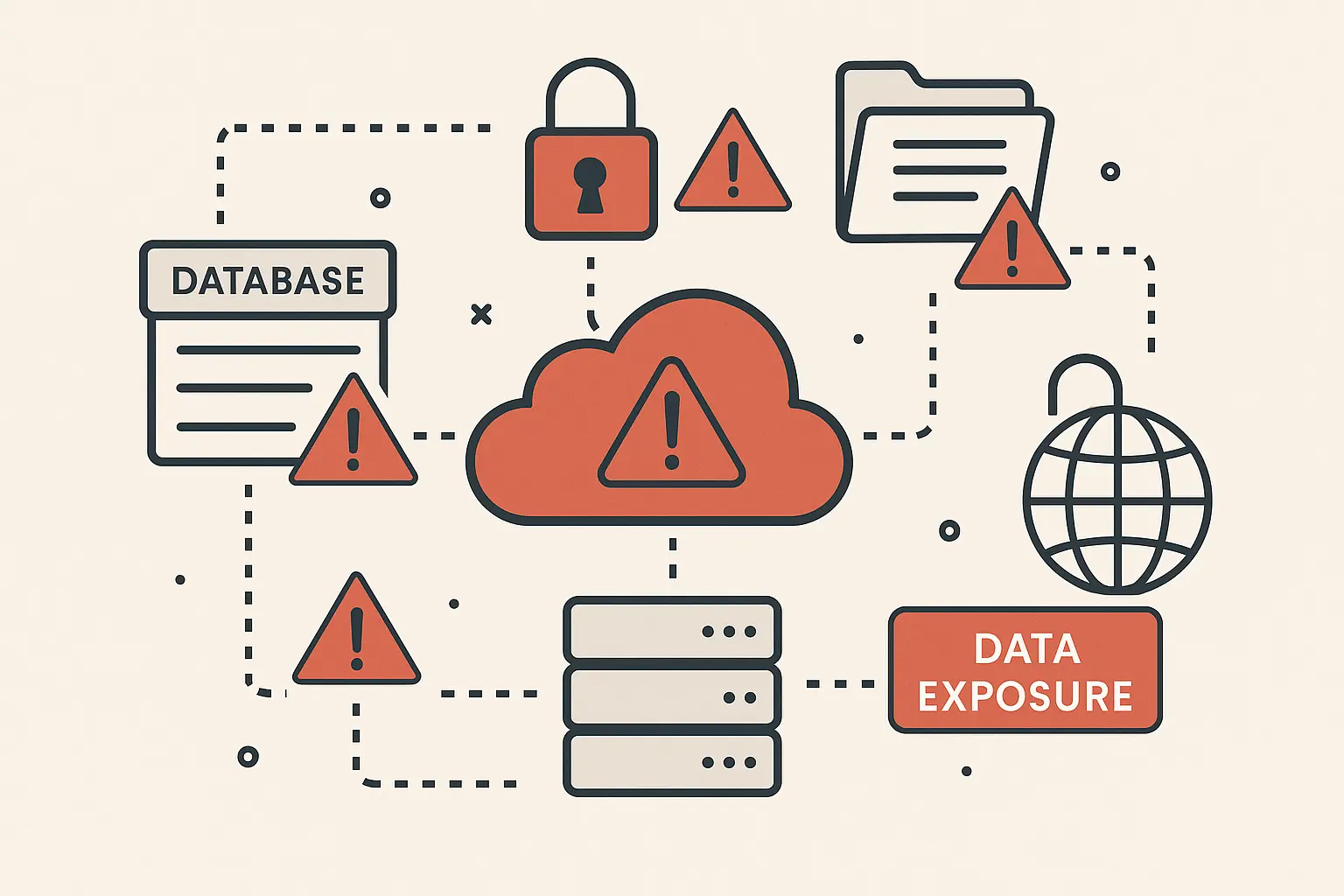
16. AWS S3 Bucket Misconfigurations (Ongoing)
Tons of high-profile data exposures have resulted from misconfigured Amazon S3 storage buckets, representing a systemic cloud security challenge. These incidents show how default settings, terrible access controls, and human error can expose sensitive data to the public internet.
Common screw-up patterns include default public read permissions, overly permissive bucket policies, disabled encryption, inadequate access logging, and failure to implement least-privilege access principles. Many organizations also lack visibility into their cloud storage configurations and automated compliance checking.
Notable incidents include Accenture (137GB of client data), Verizon (14 million customer records), WWE (3 million fan records), and numerous government agencies. These incidents often involve personally identifiable information, financial data, and confidential business information.
The shared responsibility model in cloud computing creates confusion about security obligations. Organizations often assume cloud providers handle all security aspects, while providers focus on infrastructure security, leaving data protection to customers.
17. Zoom Security Issues During COVID-19 (2020)
Zoom faced multiple security challenges during rapid pandemic-driven growth, including “Zoombombing” incidents, encryption weaknesses, and privacy concerns. Issues included default settings that allowed uninvited participants, weak encryption implementation, and data routing through Chinese servers.
The company’s response was comprehensive: implementing waiting rooms, passwords, and end-to-end encryption. However, the incident highlighted the challenges of scaling secure systems during crisis periods when user adoption outpaces security infrastructure development.
18. Cloudflare Cloudbleed Bug (2017)
A buffer overflow bug in Cloudflare’s HTML parser caused random memory contents to be included in HTTP responses, potentially exposing sensitive data from millions of websites. The bug leaked passwords, cookies, authentication tokens, and other private information.
Cloudflare fixed the issue within hours of discovery, but cached data remained in search engines and web archives. The incident showed how infrastructure-level vulnerabilities can have widespread impact across the internet.
Think about a marketing agency managing client campaigns across multiple cloud platforms. An S3 bucket misconfiguration could expose client data, campaign strategies, and competitive intelligence. The agency might assume AWS handles all security, while AWS expects the agency to configure proper access controls. This shared responsibility confusion has led to numerous high-profile exposures, which is why organizations need clear cloud security policies and regular configuration audits.
Social Engineering: When Humans Are the Weakest Link
Technology can be patched, but human psychology remains remarkably consistent. Social engineering attacks succeed because they exploit fundamental aspects of human nature: trust, authority, urgency, and the desire to be helpful.
19. Twitter Bitcoin Scam (2020)
In July 2020, attackers pulled off one of the most visible social engineering attacks in social media history, compromising high-profile Twitter accounts including Barack Obama, Elon Musk, Bill Gates, and Apple to promote a Bitcoin scam.
The attackers used phone spear-phishing (vishing) to target Twitter employees, convincing them to provide credentials and access to internal admin tools. They specifically targeted employees with access to account support tools, gradually escalating privileges within Twitter’s systems.
Once inside Twitter’s network, attackers identified high-profile accounts and used internal tools to reset passwords and disable two-factor authentication. They posted identical Bitcoin scam messages from 130 accounts, ultimately stealing over $100,000 in cryptocurrency from victims.
The attack raised serious concerns about social media platform security, the potential for election interference, and the power of social media influence. It showed how insider access, even when obtained through social engineering, could be weaponized for financial gain or potentially more serious manipulation campaigns.

20. Anthem Healthcare Insider Threat (2015)
Anthem Inc., one of the largest health insurance companies in the US, had a massive data breach affecting 78.8 million individuals. While initially blamed on external attackers, the incident highlighted major insider threat vulnerabilities and terrible access controls.
Attackers, likely nation-state actors, got initial access through spear-phishing emails targeting Anthem employees. However, the breach’s scope got amplified by excessive insider privileges, inadequate network segmentation, and insufficient monitoring of privileged user activities.
The breach included names, Social Security numbers, birth dates, addresses, employment information, and income data. The investigation revealed that legitimate user credentials were compromised and used to access databases over several months.
The attackers exploited trust relationships and normal user behavior patterns to avoid detection, highlighting the challenge of telling the difference between legitimate and malicious insider activities.
21. Tesla Insider Sabotage Attempt (2018)
A Tesla employee tried to sabotage production systems and steal confidential data, including manufacturing secrets and financial information. The insider modified code in Tesla’s manufacturing operating system and exported data to third parties.
Tesla’s internal monitoring caught the unusual activity, leading to the employee’s termination and legal action. The case showed how insiders with legitimate access to sensitive data can exploit their positions for personal financial gain.
22. Capital One Insider Trading Scheme (2019)
Beyond Capital One’s main data breach, employees used non-public information for personal financial gain. The case showed how insiders with legitimate access to sensitive data can exploit their positions for financial benefit.
The incident highlighted the need for comprehensive monitoring of employee activities and financial transactions, particularly for employees with access to market-sensitive information.
IoT Disasters: When Everything Gets Connected (Badly)
The Internet of Things promised to make our lives more convenient. Instead, it created billions of new attack surfaces, most of which were designed with convenience prioritized over security. Default passwords, lack of update mechanisms, and minimal authentication have turned everyday devices into weapons.
23. Mirai Botnet and IoT Device Compromise (2016)
The Mirai botnet was a wake-up call that showed how poorly secured Internet of Things devices could be turned into weapons for massive distributed denial-of-service attacks. The botnet infected over 600,000 IoT devices, including security cameras, routers, and digital video recorders.
Mirai’s source code was brilliantly designed to target IoT devices using default or weak credentials. It used a table of 61 common username/password combinations and could spread automatically across networks. Once infected, devices became part of a botnet capable of generating unprecedented DDoS traffic volumes.
The botnet was responsible for several high-profile attacks, including a 620 Gbps attack on cybersecurity journalist Brian Krebs’ website and a 1.2 Tbps attack on DNS provider Dyn, which knocked out major websites including Twitter, Netflix, Reddit, and CNN.
The attacks highlighted fundamental security weaknesses in IoT manufacturing, including hardcoded passwords, lack of security updates, and terrible authentication mechanisms. The incident sparked regulatory discussions and industry initiatives to improve IoT security standards.
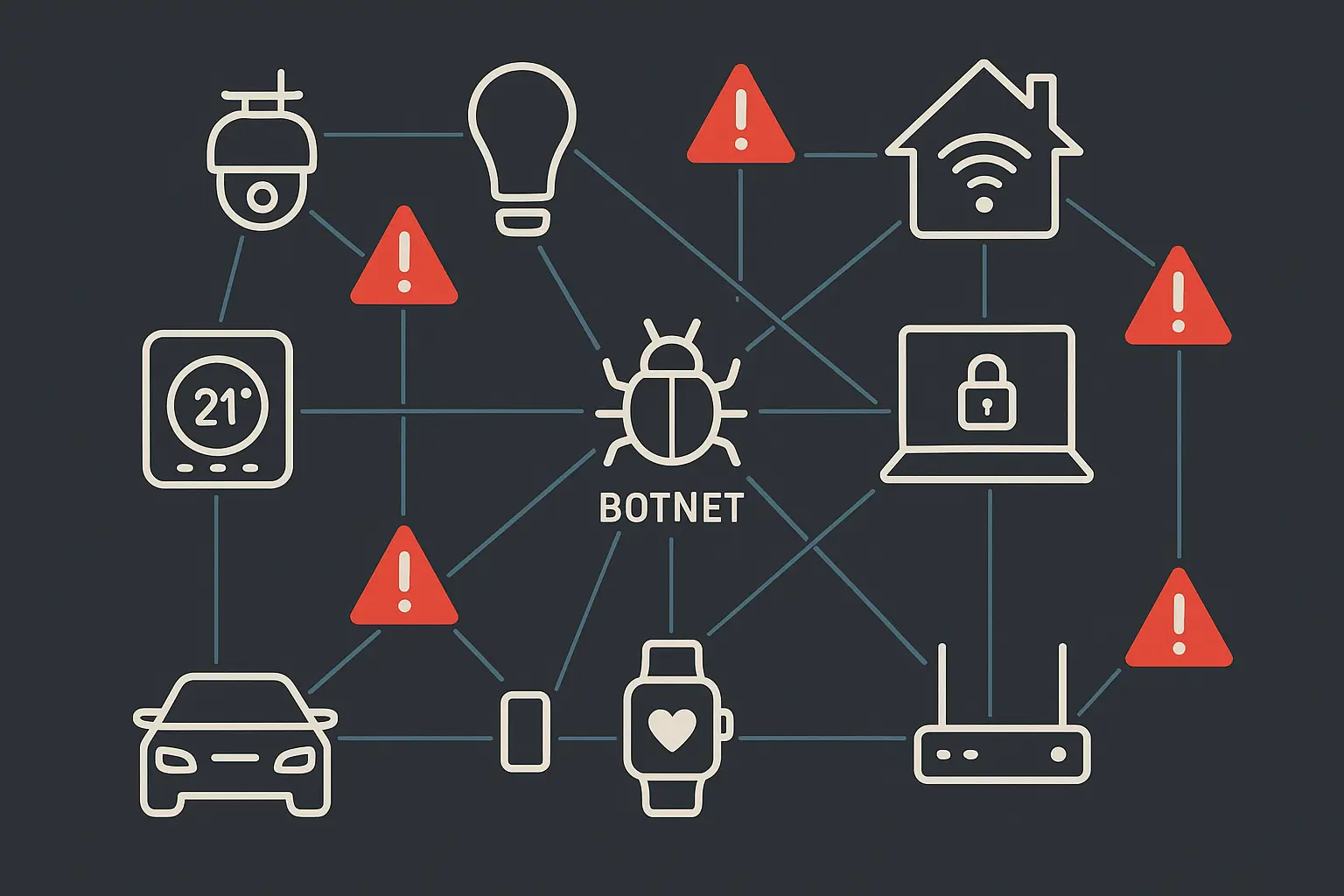
24. Jeep Cherokee Remote Hack (2015)
Security researchers Charlie Miller and Chris Valasek showed they could remotely compromise a Jeep Cherokee through its infotainment system, gaining control over steering, brakes, and engine functions. The attack exploited vulnerabilities in the vehicle’s cellular connection and internal network architecture.
The demonstration led to a recall of 1.4 million vehicles and highlighted automotive cybersecurity risks as vehicles become increasingly connected. The incident established automotive cybersecurity as a critical safety issue, rather than just a privacy concern.
25. Ring Doorbell Privacy Breaches (2019-2020)
Amazon’s Ring doorbell cameras faced multiple security incidents, including unauthorized access to customer video feeds and audio communications. Issues included weak password requirements, lack of two-factor authentication, and employees accessing customer videos without consent.
The incidents raised concerns about smart home device privacy and corporate data handling practices. Ring implemented stronger authentication requirements and enhanced privacy controls, but the damage to consumer trust was significant.
The Damage Report: Rating Each Case Study’s Impact and What We Can Learn
Not all cybersecurity incidents are created equal. Some offer huge learning opportunities while others serve mainly as cautionary tales. Here’s how these 25 cases stack up across our key evaluation criteria.
|
Case Study |
Financial Impact |
Learning Value |
Technical Complexity |
Strategic Importance |
Overall Rating |
|---|---|---|---|---|---|
|
SolarWinds |
5/5 ($100B+ economic) |
5/5 (Supply chain lessons) |
5/5 (Nation-state sophistication) |
5/5 (National security) |
5/5 |
|
Colonial Pipeline |
5/5 ($4.4M + billions disruption) |
4/5 (Infrastructure security) |
3/5 (Simple attack vector) |
5/5 (Critical infrastructure) |
4.5/5 |
|
Facebook/Cambridge Analytica |
5/5 ($5B fine + regulatory) |
5/5 (Privacy transformation) |
3/5 (API exploitation) |
5/5 (Democratic impact) |
4.5/5 |
|
Equifax |
5/5 ($700M settlement) |
4/5 (Patch management) |
2/5 (Known vulnerability) |
4/5 (Credit industry) |
4/5 |
|
Twitter Bitcoin Scam |
3/5 ($100K+ stolen) |
5/5 (Social engineering) |
3/5 (Vishing techniques) |
4/5 (Platform security) |
4/5 |
|
AWS S3 Misconfigurations |
4/5 (Ongoing exposures) |
5/5 (Cloud security) |
2/5 (Configuration errors) |
4/5 (Digital transformation) |
4/5 |
The Biggest Disasters (5/5 Rating)
SolarWinds tops the list with an estimated $100+ billion economic impact affecting national security infrastructure. The supply chain attack methodology offers lessons applicable to every organization that uses third-party software.
Colonial Pipeline created a national fuel shortage with $4.4 million in direct ransom payments but billions in economic disruption. The case shows how cybersecurity incidents can become national security crises.
Facebook/Cambridge Analytica affected 87 million users and influenced democratic processes globally. The incident fundamentally changed how society thinks about data privacy and platform responsibility.
Best Learning Opportunities
SolarWinds again leads with supply chain security lessons applicable across all industries. Every organization needs to understand vendor risk management and software supply chain security.
Twitter Bitcoin Scam provides clear social engineering prevention strategies. The attack techniques are easily understood and the countermeasures are actionable for any organization.
AWS S3 Misconfigurations offer cloud security lessons essential for digital transformation initiatives. The patterns of failure are common across organizations of all sizes.
Most Technically Complex Cases
SolarWinds demonstrates multi-stage supply chain attacks with advanced persistence techniques that required nation-state resources and patience.
Microsoft Exchange/Hafnium showcased zero-day vulnerability chaining and exploitation techniques that other threat actors quickly adopted.
Chinese COVID-19 Espionage coordinated multi-vector nation-state campaigns across numerous targets simultaneously.
Most Strategic Impact
Colonial Pipeline exemplifies critical infrastructure protection and business continuity challenges that extend beyond individual organizations.
Facebook/Cambridge Analytica reshaped data privacy regulation and customer trust expectations across all industries.
Equifax established new standards for third-party risk and regulatory compliance in data-sensitive industries.
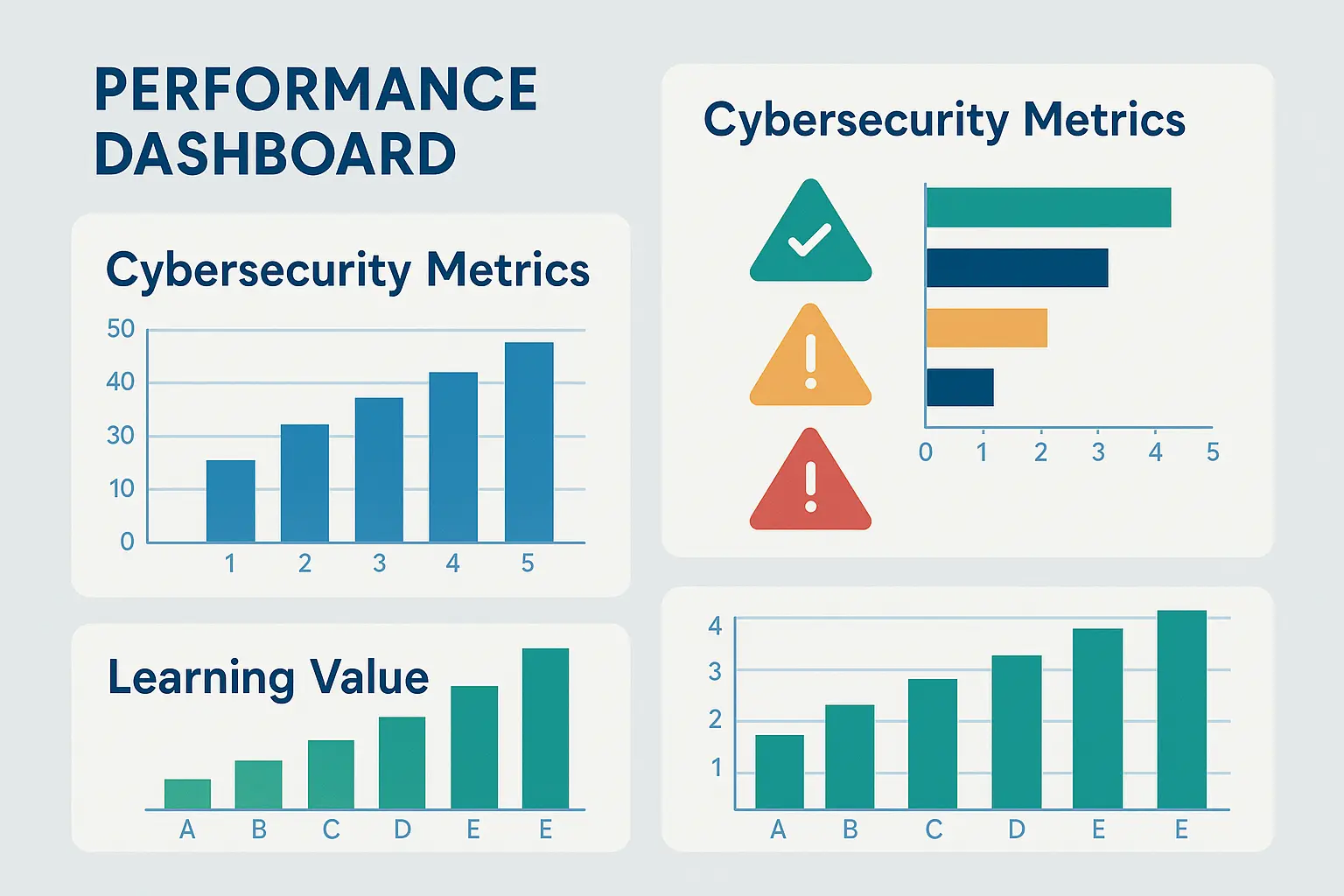
What This All Means for Your Marketing Operations
The intersection of cybersecurity and digital marketing creates both challenges and opportunities that most agencies haven’t fully grasped yet. These incidents reveal patterns that directly impact how marketing operations should approach security.
Data-Driven Marketing Security Reality Check
The Facebook/Cambridge Analytica case isn’t a cautionary tale – it’s a blueprint for how marketing data collection can become a major liability. When you’re building “strategies rooted in data and science,” you’re also building a treasure trove that cybercriminals want to access.
Understanding the financial implications of marketing security investments requires careful planning, which our marketing budget calculator can help agencies allocate appropriate resources for cybersecurity measures.
Client data protection requires more than compliance checkboxes. You need encryption for customer databases, access controls for analytics platforms, and secure integration protocols for advertising platforms, CRM systems, and marketing automation tools. The Equifax breach showed us that even the most sensitive data can be compromised through basic security failures.
Privacy compliance isn’t optional anymore. GDPR, CCPA, and emerging regulations mean that every piece of marketing data you collect, process, and store carries legal liability. The regulatory responses to major breaches have established that ignorance isn’t a defense.
AI and Automation Security Considerations
Marketing agencies integrating AI-driven analytics and automation face the same technological complexity we saw in the SolarWinds attack. As your systems become more automated and AI-powered, they also become more attractive targets for manipulation and unauthorized access.
Agencies exploring AI implementation should consider our insights on creating continuously learning systems with AI while maintaining proper security protocols throughout the development process.
Supply chain security applies directly to marketing technology vendors. Every MarTech tool in your stack represents a potential entry point for attackers. The Kaseya incident showed how one compromised vendor can affect thousands of downstream customers simultaneously.
AI model protection becomes critical when your competitive advantage depends on proprietary algorithms. You need to secure these systems against data poisoning attacks and unauthorized access while implementing detection systems for unusual AI behavior.
Cloud Infrastructure and Marketing Operations
The AWS S3 misconfiguration cases should terrify any marketing agency operating in cloud environments. When you’re managing analytics, ad accounts, and CRM systems across multiple cloud platforms, configuration errors can expose everything.
Access management requires implementing least-privilege access to marketing platforms and client data. The Twitter Bitcoin scam demonstrated how social engineering can escalate privileges within organizations, making proper access controls essential.
Regular configuration monitoring and data classification help ensure that different types of marketing and client data receive appropriate protection levels.
Business Continuity and Client Trust
The Colonial Pipeline and other ransomware cases demonstrate how cybersecurity incidents can completely disrupt business operations. For a marketing agency promising measurable outcomes and transparent partnerships, a security incident could destroy client relationships overnight.
Agencies need to calculate the potential impact of security incidents on their operations, and our marketing ROI calculator can help quantify the business value at risk from cybersecurity threats.
Incident response planning needs to include procedures for maintaining client services during security events. Backup and recovery systems must ensure marketing campaigns and client data can be quickly restored. Communication strategies should prepare transparent communication plans for clients during security events.
The Marketing Agency can differentiate itself by positioning security as a core value proposition, rather than a compliance requirement. By demonstrating superior security practices, agencies can build deeper client trust and longer-term relationships while helping clients understand and mitigate cybersecurity risks in their own digital marketing initiatives.
This represents both a challenge and an opportunity. Agencies that proactively address these security considerations will be better positioned to serve enterprise clients, handle sensitive data responsibly, and maintain the trust essential for successful marketing partnerships.
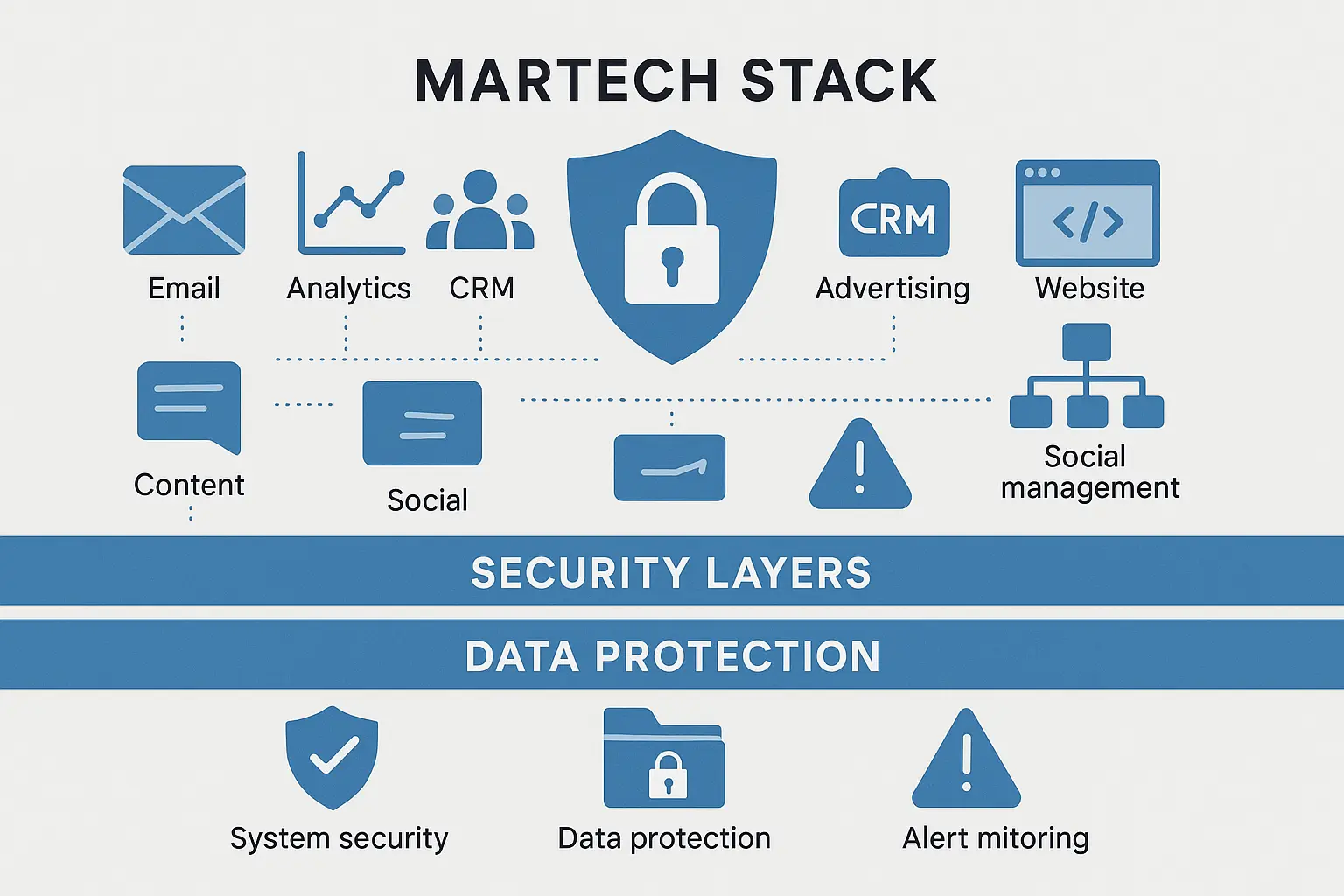
Final Thoughts
These 25 incidents reveal that modern cyber threats have evolved far beyond simple criminal activities to become complex challenges involving nation-states, supply chains, and human psychology, requiring organizations to adopt comprehensive security strategies that address technical vulnerabilities, human factors, and business continuity simultaneously.
The cybersecurity landscape has fundamentally changed. We’re facing organized criminal enterprises, nation-state actors, and AI-powered attacks that operate with the sophistication of Fortune 500 companies. The cases we’ve examined reveal patterns that every organization needs to understand, regardless of size or industry.
Supply chain attacks like SolarWinds and Kaseya have shown us that no organization is an island. Your security is only as strong as your weakest vendor, and attackers understand this better than most defenders do. The traditional perimeter-based security model is dead – we need to assume breach and design systems accordingly.
Human factors remain the weakest link, but they’re also the most trainable. The Twitter Bitcoin scam and Anthem breach show that social engineering techniques work across all organizational levels. However, companies that invest in comprehensive security awareness training and create cultures where reporting suspicious activity is rewarded rather than punished see measurably better outcomes.
Organizations looking to measure the effectiveness of their security investments can benefit from our comprehensive GA4 audit guide to understand how security incidents might impact their digital analytics and measurement capabilities.
Cloud security isn’t about technology – it’s about understanding shared responsibility models and maintaining visibility across increasingly complex infrastructure. The AWS S3 misconfigurations and Microsoft Exchange vulnerabilities show us that default settings and patch management failures can have catastrophic consequences.
Perhaps most importantly, these cases reveal that cybersecurity is ultimately a business issue, not a technical one. The organizations that recover successfully from major incidents are those that treat security as a strategic business function, not an IT afterthought. They invest in incident response capabilities, maintain transparent communication with stakeholders, and view security investments as competitive advantages rather than necessary evils.
The threat landscape will continue evolving, but the fundamental lessons from these cases will remain relevant: assume breach, trust but verify, prepare for the worst, and remember that cybersecurity is ultimately about protecting the people and relationships that make your business possible.
Each incident we’ve examined offers a window into the future of digital threats. By understanding these patterns and preparing accordingly, organizations can build resilience against both known threats and the unknown challenges that lie ahead. I hate to be the bearer of bad news, but you’re going to get hit. Maybe not today, maybe not next month, but it’s coming. The only question is: when it happens, will you be ready, or will you be another case study for someone else to write about?



